- Joined
- Sep 3, 2000
- Messages
- 6,756
Thanks guys! It truly helps all of us to step back once in a while and make it clear what its all about in terms that one can digest.
It is certainly right that if a diamond, or any object, that we'd hope is also to be sparkly, has too much brilliancy, that the appearance of sparkle will be diminished or non-existent.
Diamonds in jewelry are observed at many differing angles, but when buying or selecting a diamond, one looks at rather more closely and with more intense observational conditions than at any other time. Admirers who later take a close, possibly envious, look at a set diamond also may use nearly the same degree of observational intensity. At these times, the viewer does not look from a wide angle but from a basically face up to a near face-up view. If a diamond is only good face-up, it will be an underperformer otherwise anyway. That would be the sort of diamond that one would hesistate to boldly show off or brag about. There's a lot of those out there and their owner's love them, but they are not the best stones.
The potential for scintillation is what I'd call sparkle. This is a static measure of the standard deviation of the greyscale between all the pixels inside the face-up view. The broader, the larger, the standard deviation, the more sparkle is there and the more that will be there when the stone is moved and scintillation happens. Although the ASET scope shows pretty colors, I believe the measure of the stone's ability to sparkle can just as well be derived from greyscale.
I suppose it is nice to know what the angles of light are coming into the stone. For the life of me, I can't figure out who is in a position to decide what angles are "right" ones. AGS is, I suspect. If common sense prevails, I think we have pretty good answers already. Now, what do we do to go further. How will ALL the shapes be handled? I don't see this tool being of much use with some other shapes. I must admit, the Asscher above, looks super with the ASET images. It took a lot of work to construct them, didn't it? I see a direct digital solution as being easier to achieve, more elegant, more scientific, and more flexible for variation in faceting, outline and shape......
It is certainly right that if a diamond, or any object, that we'd hope is also to be sparkly, has too much brilliancy, that the appearance of sparkle will be diminished or non-existent.
Diamonds in jewelry are observed at many differing angles, but when buying or selecting a diamond, one looks at rather more closely and with more intense observational conditions than at any other time. Admirers who later take a close, possibly envious, look at a set diamond also may use nearly the same degree of observational intensity. At these times, the viewer does not look from a wide angle but from a basically face up to a near face-up view. If a diamond is only good face-up, it will be an underperformer otherwise anyway. That would be the sort of diamond that one would hesistate to boldly show off or brag about. There's a lot of those out there and their owner's love them, but they are not the best stones.
The potential for scintillation is what I'd call sparkle. This is a static measure of the standard deviation of the greyscale between all the pixels inside the face-up view. The broader, the larger, the standard deviation, the more sparkle is there and the more that will be there when the stone is moved and scintillation happens. Although the ASET scope shows pretty colors, I believe the measure of the stone's ability to sparkle can just as well be derived from greyscale.
I suppose it is nice to know what the angles of light are coming into the stone. For the life of me, I can't figure out who is in a position to decide what angles are "right" ones. AGS is, I suspect. If common sense prevails, I think we have pretty good answers already. Now, what do we do to go further. How will ALL the shapes be handled? I don't see this tool being of much use with some other shapes. I must admit, the Asscher above, looks super with the ASET images. It took a lot of work to construct them, didn't it? I see a direct digital solution as being easier to achieve, more elegant, more scientific, and more flexible for variation in faceting, outline and shape......

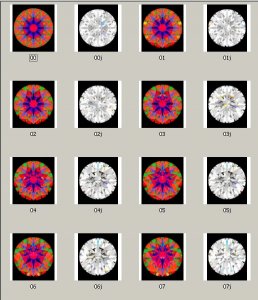
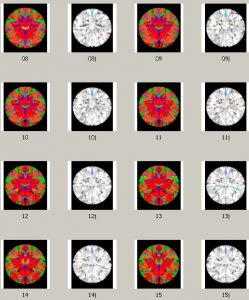
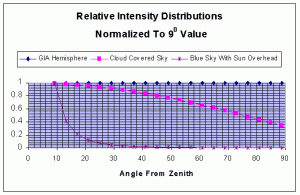




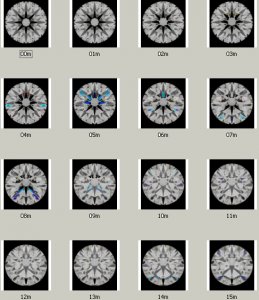
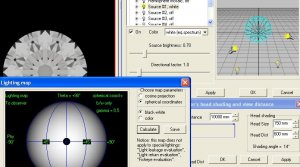
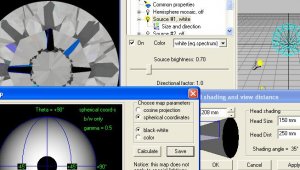


300x240.png)